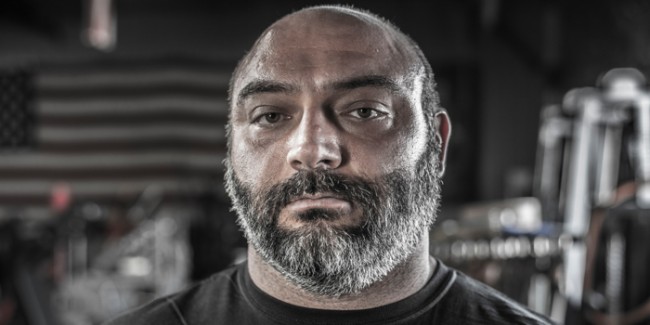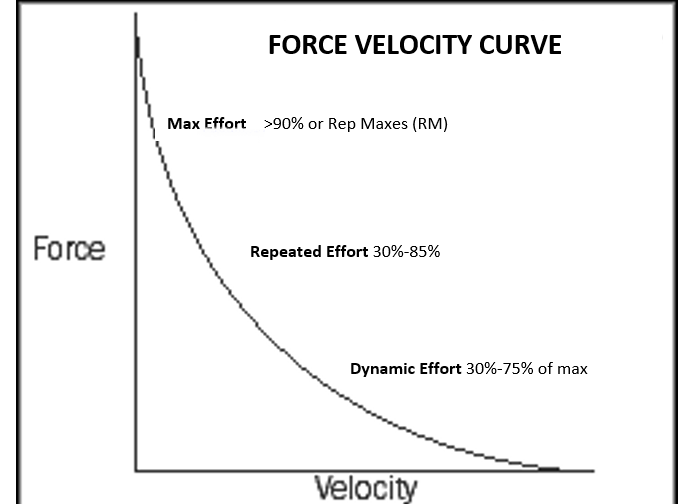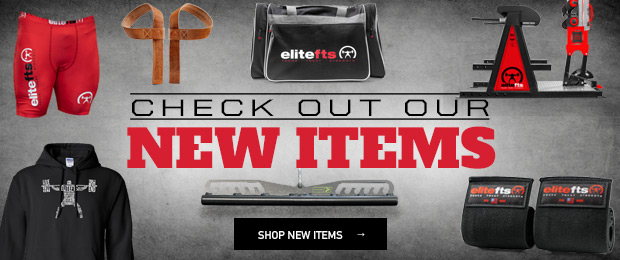
Originally published in January of 2019
Below is the typical training set-up for our athletes’ upper body days. Each number is a lane. It is set up this way to help keep things organized when planning training. When you are heading into your important time of year (peaking), it is important to keep these things separate but also understand they do affect each other. We’ll discuss movement selection later in the article. This article is geared toward athlete training, but the guidelines will carry over to a lifter or general population training as well.
- Tissue Prep
- Warm-up
- Throws
- Max Effort or Dynamic Effort
- Accessory Work
- Ab/Torso Work
- Mobility/Reset
The throws lane is especially important for athletes because as we’ve all heard a million times, “We’re training athletes, not powerlifters.” The throws lane serves many purposes. It helps the athlete maintain some explosive work in their training all year long. The dynamic work that we do does this to some extent, but the medicine ball work helps move even further down on the velocity portion of the force/velocity curve. Remember, one of the big advantages to the conjugate model is training many traits throughout the year. Speed is king, right? Then you’d better train it. The throws also help us move in some varying planes besides our traditional bench press movement patterns. This is good from a fighting off boredom standpoint, and it also stimulates varying muscle groups, which is needed for injury prevention.

Explosive Strength Options (Static Overcome by Dynamic Contractions)
Choose one option for each upper body day. Do not perform the same movement more than once per week.
Do 3 to 6 sets of 5. During your general training phases, keep these in their own lane and complete the prescribed sets and reps before moving on to your max effort or speed lane.
Starting 8 to 10 weeks out from your peaking phase, you should pair
your throws with your dynamic and max effort movements. Post-activation potentiation is a great tool but should not be drawn on all year long. Again, save your ace cards for when you need them.
Depending on the sport you are prepping for, these may be more specific to the type of contractions used in your sport. If that is the case, these are the type of throws you want to save for your peaking phase.
Overhead Medicine Ball Slam
- 10- to 20-pound non-bouncing medicine ball
- Reach up tall
- Put hands over top of ball
- Pull ball down hard
- Use abs to pull down
- Squat the ball down
- Follow through and try to pop the ball
Lateral Medicine Ball Throw
- Start with ball on opposite hip from the wall
- Turn hips into throw
- Let back knee drop down in and bend
- Rotate from hips, not spine
Overhead Medicine Ball Slam with Seated Jump
- Use a non-bouncing medicine ball
- Start seated
- Jump as high as possible
- Slam the ball just as described in Overhead Medicine Ball Slam
Medicine Ball Bench Throw
- Start with arms extended
- Quickly drop ball to chest and press it for 3 reps
- On the last rep, throw the ball as high as you can into the air
- Rep, rep, THROW – this equals 1 rep
These can also be considered plyometric if the athlete can let the ball come down quick enough. Many times, they will fight it down, and in that case, the descent is not fast enough. You could also do these from a dead stop off the chest to make them more of an explosive strength movement.
Lying Overhead Medicine Ball Throw
- 5- to 10-pound medicine ball
- Lie on floor with arms extended overhead
- Flex lats and throw ball horizontally as hard as possible
- Do not sit up. Shoulders remain on floor
Plyometric Options (Utilizing Stretch Reflex or Reactive Ability)
- Movements must be INVOLUNTARY and reactive in nature. The eccentric to concentric times must be minimal to be truly effective. If the athletes are at the mid-range of movement too long, you must fix this.
- These methods are very stressful on the athletes. We use them sparingly and typically save them for when the athletes’ most important competition is approaching IF this is the stimulus they need. Not all athletic activities are reactive in nature. Some require maximal acceleration from a static position.
- Start with low intensity and volume, and build your way up. Typically, do not increase volume more than 20 percent week to week.
- These are usually paired with our max effort work and dynamic effort work in a superset fashion to take advantage of post-activation potentiation. We usually only pair our jumps/throws lane when we start our peaking cycles. If you draw on a resource (post-activation potentiation) too often or for too long, it will lose its effectiveness. REMEMBER: With high Central Nervous System stimulation comes higher risk for fatigue.
- Take into consideration the TYPE of movement your athletes perform (reactive vs. static to dynamic). As they near their peaking phase, use the type of throwing movements that most closely resemble their athletic needs from the standpoint of contraction types being done. Do not try to mimic too closely the exact sporting movement, as this can oftentimes be dangerous with a weighted implement.
Reactive Medicine Ball Chest Pass
- Catch ball with arms fully extended
- Let ball come to your chest
- SNAP it off your chest and fully extend arms as rapidly as possible
Reactive Lateral Throw
- Use hips and abs to throw ball into wall as hard/fast as possible
- Let the ball come back to opposite hip
- Repeat throw
These are some basic throw variations that went a long way for a lot of athletes. Master the basics first before you get fancy. Speed of movement is king on these! That means you don’t put movements in that are so complex that you slow the athlete down.
It also means keep the balls light. For example, we had a 550-pound bench presser who never went higher than 30 pounds on a lying medicine ball bench throw. Please don’t put your 250-pound high school bencher on his back with a 40-pound medicine ball.
When coaching these, make sure the movements are crisp and fast.











Thanks for the article Coach!
When doing your programming, take the specific contraction types into consideration when laying out your peaking cycle. As you get closer to competition make the jump contraction types more specific to the type they will need in their competition. It's not the same for all athletes...